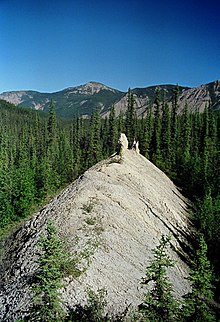
Silt is granular material of a size between sand and clay and composed mostly of broken grains of quartz.[1] Silt may occur as a soil (often mixed with sand or clay) or as sediment mixed in suspension with water. Silt usually has a floury feel when dry, and lacks plasticity when wet. Silt can also be felt by the tongue as granular when placed on the front teeth (even when mixed with clay particles).
Silt is a common material, making up 45% of average modern mud. It is found in many river deltas and as wind-deposited accumulations, particularly in central Asia, north China, and North America. It is produced in both very hot climates (through such processes as collisions of quartz grains in dust storms) and very cold climates (through such processes as glacial grinding of quartz grains.)
Loess is soil rich in silt which makes up some of the most fertile agricultural land on Earth. However, silt is very vulnerable to erosion, and it has poor mechanical properties, making construction on silty soil problematic. The failure of the Teton Dam in 1976 has been attributed to the use of unsuitable loess in the dam core, and liquefication of silty soil is a significant earthquake hazard. Windblown and waterborne silt are significant forms of environmental pollution, often exacerbated by poor farming practices.
- ^ Assallay, A.; Rogers, C.D.F.; Smalley, I.J.; Jefferson, I.F. (November 1998). "Silt: 2–62 μm, 9–4φ". Earth-Science Reviews. 45 (1–2): 61–88. Bibcode:1998ESRv...45...61A. doi:10.1016/S0012-8252(98)00035-X.